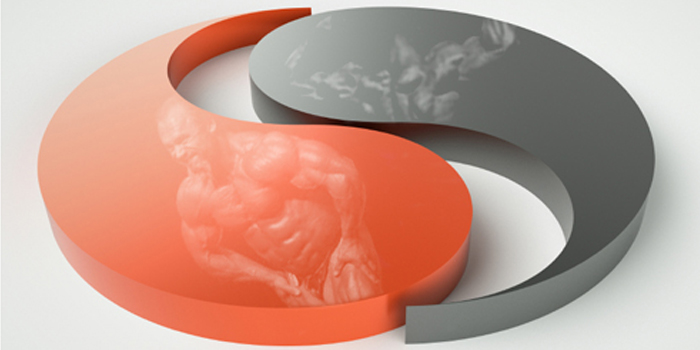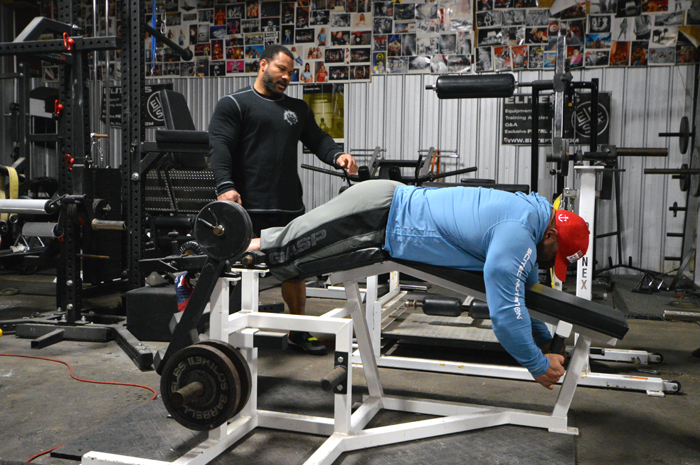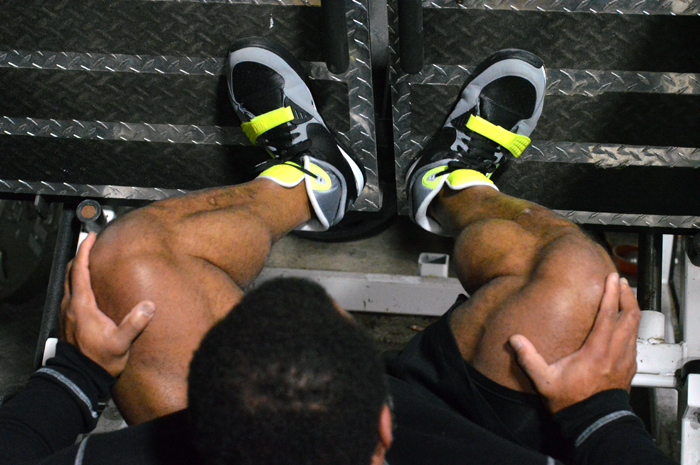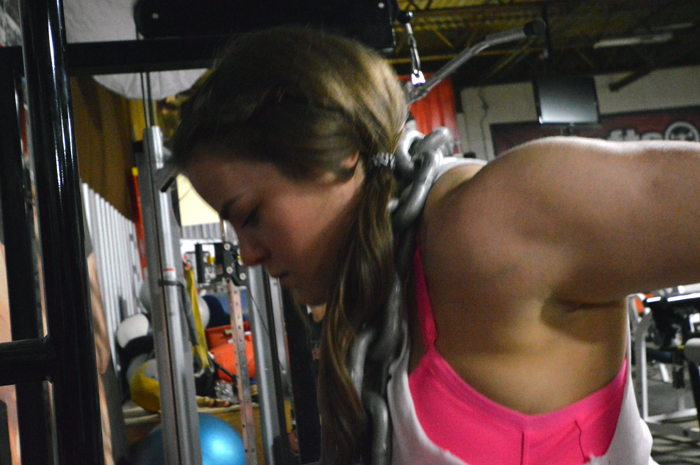
Building muscle is as simple as turning on protein synthesis, right?
At its core, gaining muscle mass is supposed to be pretty simple;even a meathead can do it. Pick (heavy) things up and put them down, eat enough food, take your supplements and ensure enough rest and recovery.
More specifically, it’s a workout by workout process. The more you crank up protein synthesis each time you train, the more you’ll grow. It’s this consistent, even relentless forward movement that makes monsters...right?
In this article, I'm going to keep the science simple and give you a glimpse into the complexity of what goes into building muscle mass at a biological level. In particular, you’ll gain some insight into why some trainees grow like weeds and some may not grow at all.
Seems Logical
Performing a long-term training study is a resource-intensive endeavor. Because it makes logical sense to assume that ergogenic aids that allow you to train harder [e.g., creatine(1)] and nutritional supplements that promote anabolism [e.g., post-workout protein and carbohydrate(2)] will have a cumulative effect, less expensive, acute studies are relevant.
More specifically, when it comes to bodybuilding, one might expect that those who respond with the greatest post-workout increase in myofibrillar protein synthesis (MPS) would logically end up with the greatest gains in muscle size. To wit, short term post-exercise (3 hour) anabolic measures are indeed reflective of protein balance over the 24 hours after a training session(3). Statistically, one might expect significant correlation between acute, post-workout protein synthesis and long-term muscle growth. Setting the muscle-building wheels in motion is part of the rationale for peri-workout recovery supplementation, which I’ve written about before.
Logic Prevails
Short-term, acute studies do indeed often parallel long-term results. When comparing milk with soy protein based drinks (matched for macronutrients), milk wins out in terms of acute protein balance(4) and muscle gain over 3 months of training(5). Post-exercise MPS measurements(6) also provide an internally consistent explanation for why high rep sets [30% of one rep maximum (30%1RM), taken to muscular failure] can grow muscle as well as more typical heavy resistance training (80%1RM)(7). [As a side note, loads this light, if not taken to failure, or used with blood flow restriction protocol would probably not produce much in the way of muscle mass(7-9) or strength gains(10).]
Similarly, when testing various intra-workout recovery supplement blends [carbohydrate, essential amino acids or a combination thereof(11, 12)], the acute pattern of acute hormonal responses (insulin and cortisol) and reduction of muscle breakdown explains why the carbohydrate / amino acid combo-consuming group grew the best over the course of training(13). (Note that this set of studies was done using the same subjects, so we’re not comparing responses in one set of subjects to adaptations in another group of trainees.)
Logic Falls Flat on Its Face
So, just to be sure a prolific research group at McMaster University (Canada) set out to test what might seem obvious: Is post-exercise muscle protein synthesis (when optimized with a post-workout protein / carb shake), at the start of training, predictive of the muscle mass gains that those same individuals will make over the next 16 weeks of training(14)?
You can probably tell what I’m leading up to. The correlation between MPS over the six hour post-exercise period at the start of training and post-training muscle growth (quad) was not statistically significant. Not even close. They found the correlation between changes in MPS and muscle size to be 0.01, just about as close to a random association as possible. They concluded: “Clearly, however, acute early measures of MPS are not proxy measures for hypertrophy or hypertrophic potential within the same individual(14).”
So, What Gives?
How can this be? What on earth could explain such a strange finding, you ask? Let’s take a closer look at some possibilities:
- Maybe this is a fluke study? Well, this lack of correlation has been observed previously. A 2009 study found no correlation between MPS (24hr post-exercise) and fiber hypertrophy. Those researchers wisely noted that it may be overly simplistic to assume a linear (first order) correlation between acute MPS early in training and training-induced fiber hypertrophy(15).
- If everyone had grown the same extent, it might be tough to find a correlation. There must be some measurement variability to produce a statistically significant correlation. However, this was not the issue here, as the McMaster researchers found a wide range of muscle growth, from ~nil to >25% increases in quad cross-sectional area. The spread in the post-exercise increase in MPS was even greater.
- As mentioned previously, acute post-exercise protein synthesis is representative of the 24 hour period after a training bout(3), suggesting that they didn’t cut their measurement period too short. They also found no correlation between muscle growth and MPS over the beginning or tail end of their measurement period.
- Was it a matter of protein breakdown (not synthesis)? Typically, protein synthesis is only measured because the relative increase in breakdown is roughly 25% (or less) of the rise in MPS(16). Also, breakdown and synthesis are typically correlated, so MPS is representative of muscle protein breakdown(17, 18). [Technical complexity in measuring breakdown is another reason why its often not measured, but some researchers feel this is a quite unfortunate ommision(19). More on this below.]
- Maybe some aspect of the diet, outside of the post-exercise period was at work: The McMaster group did not monitor in their subjects’ diets. However, previous work suggests that neither habitual intake of carbohydrate, protein, fat, nor essential amino acids (not even the branched chain amino acids) explain differences in growth between extreme responders and non-responders to when it comes to packing on muscle size(20).
- Maybe the MPS response at the start of training doesn’t represent what happens throughout training? Indeed, being trained may actually increase (21) or potentially decrease (18) the MPS response, as well as shorten its duration(21). Training also shifts the relative proportions of contractile vs. other muscle proteins that are synthesized(22). Training thus reduces protein turnover in general(23), shifting protein balance positively as one grows(24). Quizzically, this would suggest that the more trained you are, the less protein you’d need. On the contrary, two recent meta-analyses suggest training-induced muscle growth is better with higher protein intake(25, 26).
- Perhaps the complication lies with some downstream signal set in motion by the mTOR enzyme complex(I), the master intracellular controller of protein synthesis(27). A few studies have found that phosphorylation of one particular molecule (p70S6K1) to be predictive of muscle growth(15, 28, 29) or protein synthesis [at least in young but not old subjects(8)]. However, that was not the case in the McMaster study at hand(14). Similarly, this study did not duplicate a correlation found between another molecule (4E-BP1) and protein synthesis(30). They did find that this latter signaler correlated with the evoked muscle growth, however(14). Part of this molecular messiness is likely due to a temporal dissociation (a time lapse of some sort) between (protein) metabolism and signaling, that even has the molecular biologists perplexed(15, 31).
I’m Still Confused
Well, you’re right. There aren’t any clear explanations for the McMaster study in the above bullet points. The mechanics of eating and training may be old hat to the gym vets reading this, but the underlying biology of enlarging muscle doesn’t appear to be quite so simplistic. If you step back and consider what’s going on here, even without intricate knowledge of skeletal muscle cell structure, it might make sense that the growth remodeling process does not occur overnight. [Muscle cells are tremendously large, multi-nucleated cellular masterpieces of protein contractile machinery, marvelously coupled to our nervous system(32)].
In an upcoming article, we’ll take a look at some research that uses a wider lens to elucidate why some people grow like weeds, and others may realize little or even no muscle growth whatsoever over the course of months and months of resistance training.
References
1. Greenhaff, P.L., et al., Influence of oral creatine supplementation of muscle torque during repeated bouts of maximal voluntary exercise in man. Clin. Sci.(Colch). 1993. 84: p. 565-571.
2. Tipton, K.D., et al., Timing of amino acid-carbohydrate ingestion alters anabolic response of muscle to resistance exercise. Am J Physiol Endocrinol Metab, 2001. 281(2): p. E197-206. http://www.ncbi.nlm.nih.gov/entrez/query.fcgi?cmd=Retrieve&db=PubMed&dopt=Citation&list_uids=11440894
3. Tipton, K.D., et al., Acute response of net muscle protein balance reflects 24-h balance after exercise and amino acid ingestion. Am J Physiol Endocrinol Metab, 2003. 284(1): p. E76-89.
4. Wilkinson, S.B., et al., Consumption of fluid skim milk promotes greater muscle protein accretion after resistance exercise than does consumption of an isonitrogenous and isoenergetic soy-protein beverage. Am J Clin Nutr, 2007. 85(4): p. 1031-40.
5. Hartman, J.W., et al., Consumption of fat-free fluid milk after resistance exercise promotes greater lean mass accretion than does consumption of soy or carbohydrate in young, novice, male weightlifters. Am J Clin Nutr, 2007. 86(2): p. 373-81. http://www.ncbi.nlm.nih.gov/entrez/query.fcgi?cmd=Retrieve&db=PubMed&dopt=Citation&list_uids=17684208
6. Burd, N.A., et al., Low-load high volume resistance exercise stimulates muscle protein synthesis more than high-load low volume resistance exercise in young men. PloS one, 2010. 5(8): p. e12033. http://www.plosone.org/article/info:doi/10.1371/journal.pone.0012033
7. Mitchell, C.J., et al., Resistance exercise load does not determine training-mediated hypertrophic gains in young men. Journal of applied physiology, 2012. 113(1): p. 71-7. http://www.ncbi.nlm.nih.gov/pubmed/22518835
8. Kumar, V., et al., Age-related differences in the dose-response relationship of muscle protein synthesis to resistance exercise in young and old men. J Physiol, 2009. 587(Pt 1): p. 211-7. http://www.ncbi.nlm.nih.gov/pubmed/19001042
9. Fry, A.C., The role of resistance exercise intensity on muscle fibre adaptations. Sports Med, 2004. 34(10): p. 663-79. http://www.ncbi.nlm.nih.gov/pubmed/15335243
10. Atha, J., Strengthening muscle. Exercise and sport sciences reviews, 1981. 9: p. 1-73. http://www.ncbi.nlm.nih.gov/pubmed/6749520
11. Bird, S.P., et al., Liquid carbohydrate/essential amino acid ingestion during a short-term bout of resistance exercise suppresses myofibrillar protein degradation. Metabolism, 2006. 55(5): p. 570-7. http://www.ncbi.nlm.nih.gov/entrez/query.fcgi?cmd=Retrieve&db=PubMed&dopt=Citation&list_uids=16631431
12. Bird, S.P., et al., Effects of liquid carbohydrate/essential amino acid ingestion on acute hormonal response during a single bout of resistance exercise in untrained men. Nutrition, 2006. 22(4): p. 367-75. http://www.ncbi.nlm.nih.gov/entrez/query.fcgi?cmd=Retrieve&db=PubMed&dopt=Citation&list_uids=16472979
13. Bird, S.P., et al., Independent and combined effects of liquid carbohydrate/essential amino acid ingestion on hormonal and muscular adaptations following resistance training in untrained men. Eur J Appl Physiol, 2006. 97(2): p. 225-38. http://www.ncbi.nlm.nih.gov/entrez/query.fcgi?cmd=Retrieve&db=PubMed&dopt=Citation&list_uids=16456674
14. Mitchell, C.J., et al., Acute post-exercise myofibrillar protein synthesis is not correlated with resistance training-induced muscle hypertrophy in young men. PLoS One, 2014. 9(2): p. e89431.
15. Mayhew, D.L., et al., Translational signaling responses preceding resistance training-mediated myofiber hypertrophy in young and old humans. Vol. 107. 2009. 1655-1662. http://jap.physiology.org/jap/107/5/1655.full.pdf
16. Glynn, E.L., et al., Muscle protein breakdown has a minor role in the protein anabolic response to essential amino acid and carbohydrate intake following resistance exercise. Am J Physiol Regul Integr Comp Physiol, 2010. 299(2): p. R533 - 40.
17. Phillips, S.M., et al., Mixed muscle protein synthesis and breakdown after resistance exercise in humans. The American journal of physiology, 1997. 273(1 Pt 1): p. E99-107. http://www.ncbi.nlm.nih.gov/pubmed/9252485
18. Phillips, S.M., et al., Resistance training reduces the acute exercise-induced increase in muscle protein turnover. Am J Physiol, 1999. 276(1 Pt 1): p. E118-24. http://www.ncbi.nlm.nih.gov/entrez/query.fcgi?cmd=Retrieve&db=PubMed&dopt=Citation&list_uids=9886957
19. Deutz, N.E. and R.R. Wolfe, Is there a maximal anabolic response to protein intake with a meal? Clin Nutr, 2013. 32(2): p. 309-13.
20. Thalacker-Mercer, A.E., et al., Does habitual dietary intake influence myofiber hypertrophy in response to resistance training? A cluster analysis. Appl Physiol Nutr Metab, 2009. 34(4): p. 632-9.
21. Tang, J.E., et al., Resistance training alters the response of fed state mixed muscle protein synthesis in young men. Am J Physiol Regul Integr Comp Physiol, 2008. 294(1): p. R172-8.
22. Kim, P.L., et al., Fasted-state skeletal muscle protein synthesis after resistance exercise is altered with training. J Physiol, 2005. 568(Pt 1): p. 283-90.
23. Phillips, S.M., Strength and hypertrophy with resistance training: chasing a hormonal ghost. Eur J Appl Physiol, 2012. 112(5): p. 1981-3; author reply 1985-7. http://www.ncbi.nlm.nih.gov/pubmed/21898144
24. Hartman, J.W., et al., Resistance training reduces whole-body protein turnover and improves net protein retention in untrained young males. Appl Physiol Nutr Metab, 2006. 31(5): p. 557-64.
25. Cermak, N.M., et al., Protein supplementation augments the adaptive response of skeletal muscle to resistance-type exercise training: a meta-analysis. Am J Clin Nutr, 2012. 96(6): p. 1454-64. http://www.ncbi.nlm.nih.gov/pubmed/23134885
26. Schoenfeld, B.J., et al., The effect of protein timing on muscle strength and hypertrophy: a meta-analysis. J Int Soc Sports Nutr, 2013. 10(1): p. 53.
27. Zoncu, R., et al., mTOR: from growth signal integration to cancer, diabetes and ageing. Nature Reviews. Molecular Cell Biology, 2011. 12(1): p. 21-35. http://search.proquest.com/docview/819672953?accountid=458
28. Mitchell, C.J., et al., Muscular and Systemic Correlates of Resistance Training-Induced Muscle Hypertrophy. PLoS ONE, 2013. 8(10): p. e78636. http://dx.doi.org/10.1371%2Fjournal.pone.0078636
29. Terzis, G., et al., Resistance exercise-induced increase in muscle mass correlates with p70S6 kinase phosphorylation in human subjects. Eur J Appl Physiol, 2008. 102(2): p. 145-52. http://www.ncbi.nlm.nih.gov/pubmed/17874120
30. Burd, N.A., et al., Resistance exercise volume affects myofibrillar protein synthesis and anabolic signalling molecule phosphorylation in young men. J Physiol, 2010. 588(Pt 16): p. 3119-30.
31. Greenhaff, P.L., et al., Disassociation between the effects of amino acids and insulin on signaling, ubiquitin ligases, and protein turnover in human muscle. Am J Physiol Endocrinol Metab, 2008. 295(3): p. E595 - 604.
32. McComas, A.J., Skeletal muscle : form and function. 1996, Champaign, IL: Human Kinetics. xiv, 401 p.














Speaking of myself, eating 2X the calories including protein at 2X LBM has never increased my muscle mass or strength significantly. Not to mention, gaining quality muscle is different for each body part. And once I have gained the "extra" muscle, it doesn't take nearly the same amount of calories (and protein) to maintain it....even dropping and maintaining my protein between 0.7-1.0 per pound of LBM for months. Just about the entire supplement industry markets their products around this very concept of increasing protein synthesis....and is one reason why AAS works incredibly well. I think we'll all be interested in finding a more definitive answer of how and why protein synthesis actually takes place. Looking forward to part deux!
-D- Now you know (as I'm sure you did before) that you're not alone!!! :)
Dr. Phillips - Many thanks for the links! (I'm only able to access the first page of the Viewpoint article, but will order via ILL.)
And the point about the import of acute hormonal responses for driving hypertrophic adaptation deserves to be mentioned again, I agree. It was just brought up recently at a conference I attended not long ago where a bit of Häkkinen and Kraemer's data (http://www.ncbi.nlm.nih.gov/pubmed/12734759) demonstrating that acute hormonal responsiveness are predictive of training-induces muscle growth was put forth to support the notion of that acute responses are important for hypertrophy.
My take on that is that these hormones are more so markers of training stress (e.g., in the context of overreaching / overtraining) rather than drivers of adaptation. Just as it makes sense from a teleologic / evolutionary perspective for the menstrual cycle to cease in the face of caloric deficit (ala the female athlete triad), reduced testosterone would reduce sex drive in men in circumstances where the (training) stress of the environment is high.